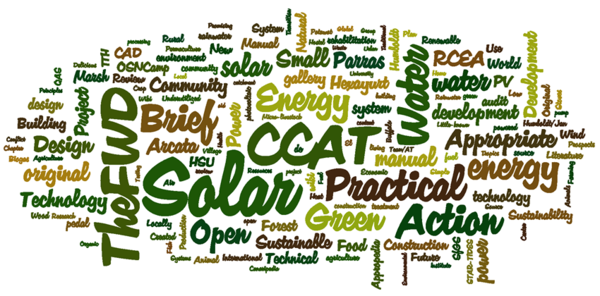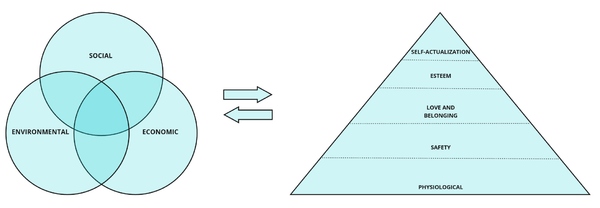RichardF here | @ Dev site | @ Wikipedia | @ Kivapedia | @ Next Steps


Contents[edit | edit source]
Lists[edit | edit source]
Faceted classifications[edit | edit source]
Top 100 cats by proposed fundamentals[edit | edit source]
Fundamental category - faceted subcategories proposal[edit | edit source]
| Fundamental category | SISD Core Themes | SISD Content Items | Fundamental candidates | |
|---|---|---|---|---|
|
no subcategories |
|
|
Category Fundamental human needs not found
|
|
The SISD Forum framework[edit | edit source]
The Forum on Science and Innovation for Sustainable Development framework consists of "Core Themes" used to group the presentation of "Content Items" - Projects, Members, Publications, Programs, Solutions, Commentaries, Education & Training, Integrated Studies, and Key Journals. Content items are on individual pages using style sheets for each type of content. They are classified within Core Themes. They also can be directly associated with other content items.
|
|
|
Appropedia categories[edit | edit source]
| Sustainable tools |
Fundamental human needs | |||||||
|---|---|---|---|---|---|---|---|---|
| Environment | Locations | Living | Food - Agriculture | Energy | Health - Safety | Water | Culture and community | |
| Knowledge | ||||||||
| Appropriate tech | ||||||||
| Taking action | ||||||||
| Green living | ||||||||
| Projects | ||||||||
| Communication | ||||||||
| How tos | ||||||||
| Design | ||||||||
| International devel | ||||||||
| Organizations | ||||||||
| Business | ||||||||
| Built environment | ||||||||
| Construction | ||||||||
| Transport | ||||||||
Fundamental human needs and Human Scale Development[edit | edit source]
| Fundamental human needs and Human Scale Development | ||||
|---|---|---|---|---|
| Need | Being (qualities) | Having (things) | Doing (actions) | Interacting (settings) |
| subsistence | physical and mental health | food, shelter, work | feed, clothe, rest, work | living environment, social setting |
| protection | care, adaptability, autonomy | social security, health systems, work | co-operate, plan, take care of, help | social environment, dwelling |
| affection | respect, sense of humour, generosity, sensuality | friendships, family, relationships with nature | share, take care of, make love, express emotions | privacy, intimate spaces of togetherness |
| understanding | critical capacity, curiosity, intuition | literature, teachers, policies, education | analyse, study, meditate, investigate | schools, families, universities, communities |
| participation | receptiveness, dedication, sense of humour | responsibilities, duties, work, rights | cooperate, dissent, express opinions | associations, parties, churches, neighbourhoods |
| leisure | imagination, tranquillity, spontaneity | games, parties, peace of mind | day-dream, remember, relax, have fun | landscapes, intimate spaces, places to be alone |
| creation | imagination, boldness, inventiveness, curiosity | abilities, skills, work, techniques | invent, build, design, work, compose, interpret | spaces for expression, workshops, audiences |
| identity | sense of belonging, self-esteem, consistency | language, religions, work, customs, values, norms | get to know oneself, grow, commit oneself | places one belongs to, everyday settings |
| freedom | autonomy, passion, self-esteem, open-mindedness | equal rights | dissent, choose, run risks, develop awareness | anywhere |
Millennium Development Goals[edit | edit source]
| Millennium Development Goals |
|---|
| Goal 1: Eradicate extreme poverty and hunger |
|
| Goal 2: Achieve universal primary education |
|
| Goal 3: Promote gender equality and empower women |
|
| Goal 4: Reduce child mortality rates |
|
| Goal 5: Improve maternal health |
|
| Goal 6: Combat HIV/AIDS, malaria, and other diseases |
|
| Goal 7: Ensure environmental sustainability |
|
| Goal 8: Develop a global partnership for development |
|
- ↑ Adams, W.M. (2006). "The Future of Sustainability: Re-thinking Environment and Development in the Twenty-first Century." Report of the IUCN Renowned Thinkers Meeting, 29–31 January 2006. Retrieved on: 2009-07-25.
- ↑ MDG Monitor:Goal 1
- ↑ MDG Monitor:Goal 2
- ↑ MDG Monitor:Goal 3
- ↑ MDG Monitor:Goal 4
- ↑ MDG Monitor:Goal 5
- ↑ MDG Monitor:Goal 6
- ↑ MDG Monitor:Goal 7
- ↑ MDG Monitor:Goal 8
High-level heirarchical classifications[edit | edit source]
| Sidebar | CategoryTree | Fundamental category | Topics category | Appropedia category |
|---|---|---|---|---|
|
no subcategories |
no subcategories |
Vital articles, top-level importance candidates[edit | edit source]
| Sidebar | CategoryTree | Topics category | Combined topics |
|---|---|---|---|
|
no subcategories |
Category Fundamental human needs not found
|
[edit | edit source]
User:RichardF/Contents/Frequencies
{{Solar navbox}}
{{Water navbox}}
Top 100 articles by topic[edit | edit source]
Tables[edit | edit source]
Palettes[edit | edit source]
Tool: HTML HSV RGB Color Converter
Logo[edit | edit source]
| H120 S20 V70: #8EB28E |
|---|
| H205 S15 V95: #CDE3F2 |
| H0 S0 V10: #1A1A1A |
| H195 S0 V75: #BFBFBF |
| H0 S0 V95: #F2F2F2 |
| H0 S0 V98: #FAFAFA |
Main Page and Sidebar[edit | edit source]
| H118 S22 V70: #8CB28B |
|---|
| H120 S20 V100: #CCFFCC |
| H105 S10 V100: #EBFFE5 |
| H222 S22 V65: #818CA5 |
| H22 S22 V85: #DABBA9 |
| H51 S22 V85: #D9D2A9 |
Greens[edit | edit source]
| H105 S40 V75: #85BF72 |
|---|
| H105 S40 V85: #97D882 |
| H105 S40 V95: #A9F291 |
| H105 S15 V75: #A9BFA2 |
| H105 S15 V85: #C0D8B8 |
| H105 S15 V95: #D6F2CD |
| H105 S10 V100: #EBFFE5 |
| H105 S4 V100: #F7FFF4 |
| H115 S40 V75: #79BF72 |
|---|
| H115 S40 V85: #89D882 |
| H115 S40 V95: #99F291 |
| H115 S15 V75: #A4BFA2 |
| H115 S15 V85: #BAD8B8 |
| H115 S15 V95: #D0F2CD |
| H115 S10 V100: #E7FFE5 |
| H115 S4 V100: #F5FFF4 |
| H120 S40 V75: #73BF73 |
|---|
| H120 S40 V85: #82D982 |
| H120 S40 V95: #91F291 |
| H120 S15 V75: #A3BFA3 |
| H120 S15 V85: #B8D9B8 |
| H120 S15 V95: #CEF2CE |
| H120 S10 V100: #E6FFE6 |
| H120 S4 V100: #F5FFF5 |
Blues[edit | edit source]
| H195 S40 V75: #72ACBF |
|---|
| H195 S40 V85: #82C3D8 |
| H195 S40 V95: #91DAF2 |
| H195 S15 V75: #A2B8BF |
| H195 S15 V85: #B8D0D8 |
| H195 S15 V95: #CDE9F2 |
| H195 S10 V100: #E5F8FF |
| H195 S4 V100: #F4FCFF |
| H205 S40 V75: #729FBF |
|---|
| H205 S40 V85: #82B4D8 |
| H205 S40 V95: #91C9F2 |
| H205 S15 V75: #A2B3BF |
| H205 S15 V85: #B8CBD8 |
| H205 S15 V95: #CDE3F2 |
| H205 S10 V100: #E5F4FF |
| H205 S4 V100: #F4FAFF |
| H225 S40 V75: #7285BF |
|---|
| H225 S40 V85: #8297D8 |
| H225 S40 V95: #91A9F2 |
| H225 S15 V75: #A2A9BF |
| H225 S15 V85: #B8C0D8 |
| H225 S15 V95: #CDD6F2 |
| H225 S10 V100: #E5EBFF |
| H225 S4 V100: #F4F7FF |
Tans & Yellows[edit | edit source]
| H20 S40 V75: #BF8C72 |
|---|
| H20 S40 V85: #D89E82 |
| H20 S40 V95: #F2B191 |
| H20 S15 V75: #BFACA2 |
| H20 S15 V85: #D8C3B8 |
| H20 S15 V95: #F2DACD |
| H20 S10 V100: #FFEEE5 |
| H20 S4 V100: #FFF8F4 |
| H35 S40 V75: #BF9F72 |
|---|
| H35 S40 V85: #D8B482 |
| H35 S40 V95: #F2C991 |
| H35 S15 V75: #BFB3A2 |
| H35 S15 V85: #D8CBB8 |
| H35 S15 V95: #F2E3CD |
| H35 S10 V100: #FFF4E5 |
| H35 S4 V100: #FFFAF4 |
| H50 S40 V75: #BFB272 |
|---|
| H50 S40 V85: #D8CA82 |
| H50 S40 V95: #F2E291 |
| H50 S15 V75: #BFBAA2 |
| H50 S15 V85: #D8D3B8 |
| H50 S15 V95: #F2ECCD |
| H50 S10 V100: #FFFAE5 |
| H50 S4 V100: #FFFDF4 |
| H50 S40 V100: #FFEE99 |
|---|
| H60 S40 V100: #FFFF99 |
| H60 S10 V100: #FFFFE5 |
| H60 S4 V100: #FFFFF4 |
Interwiki links[edit | edit source]
- MyRegexTester Search
(\[\[)([\w\s\-\,\.\#\(\)]+)(\|)*([\w\s\-\,\.\#\(\)]*)(\]\]es|\]\]s|\]\])({{w\|([\w\s\-\,\.\#\(\)]+)(}}))*
- Replace
\1\2\3\4\5{{w|\2}}
- Add {{w}} and remove red links for article Pages that link to "Template:Attrib wikipedia"
|
|
|
CSS[edit | edit source]
- MediaWiki:Common.css
- User:RichardF/vector.css
- mediawiki.org/wiki/Manual:Skinning/Vector
- appropedia.org/skins/vector/screen.css
- appropedia.org/skins/vector/
- CSS3 Generator
Subpages[edit | edit source]
- Agriculture trees
- Appropriate technology trees
- Archive
- Biology top 100
- Contents
- Contents/Frequencies
- Contents/Fundamental category
- Contents/Interwiki links
- Contents/Lists
- Contents/Subsites
- Contents/Top 100 cats
- Design trees
- Development
- Development/Iframe
- Development/RichardF
- Development/RichardF talk
- Ecology top 100
- Energy storage trees
- Energy top 100
- Energy trees
- Engineering top 100
- Engineering trees
- Environment top 100
- Environment top 100/Pageviews
- Environment trees
- Forestry top 100
- Forestry trees
- Green living
- Health and fitness top 100
- Health and safety trees
- Index of sustainability articles
- International development top 100
- International development top 100/Pageviews
- Intro
- Medicine top 100
- Outline of energy
- Outline of energy development
- Outline of engineering
- Outline of forestry
- Palettes
- Sandbox
- Sandbox/doc
- Sandbox1
- Sandbox1/doc
- Sandbox2
- Sandbox3
- Solar energy navbox
- Sustainability navbox
- Sustainability trees
- Technology top 100
- Technology trees
- Top 100
- Top 100/Navbox
- Transport top 100
- Transport trees
- Urban studies and planning top 100
- Water supply and sanitation top 100
- Water trees
- vector.css